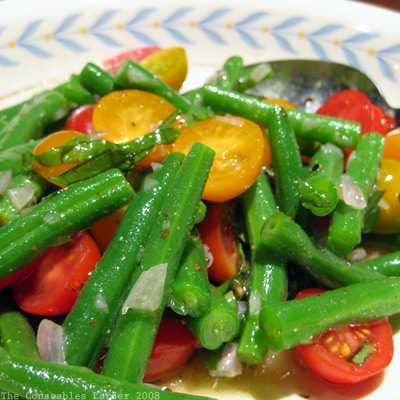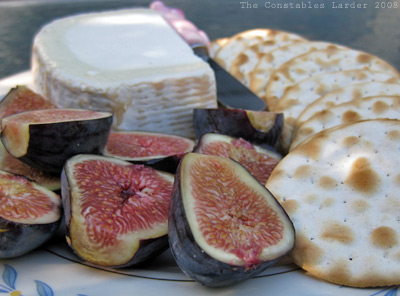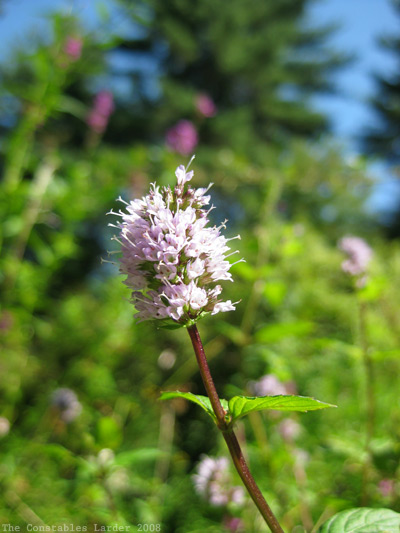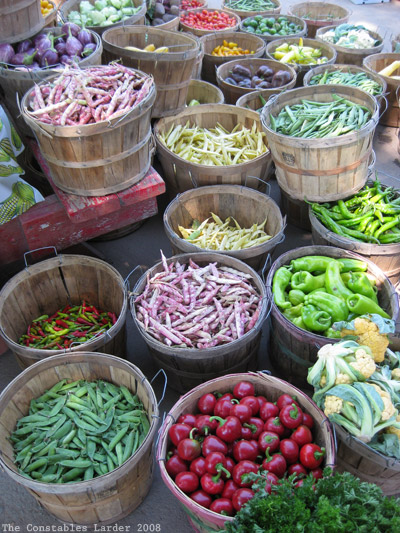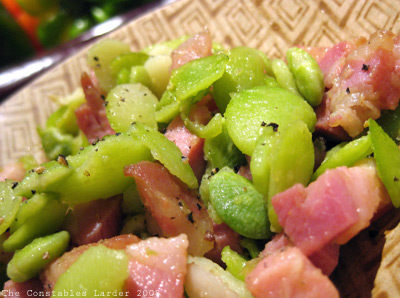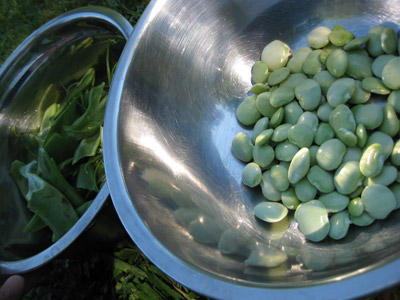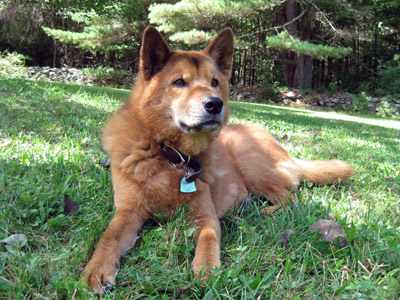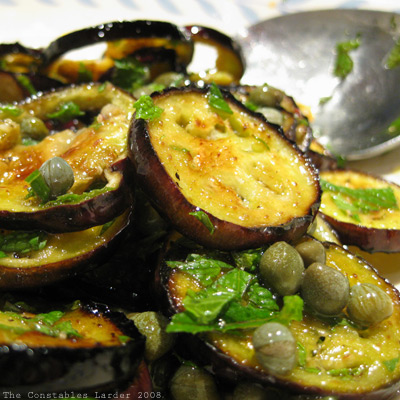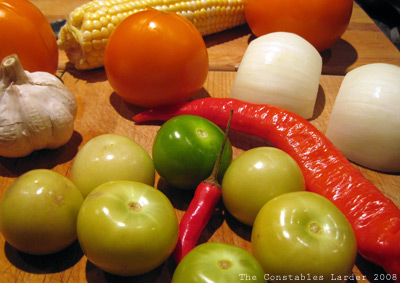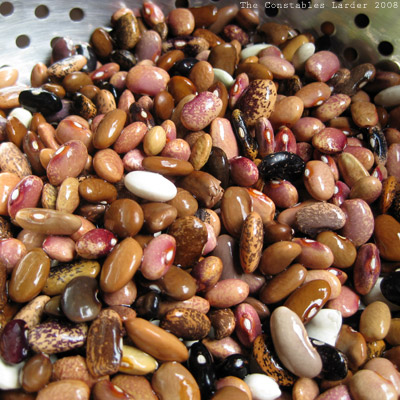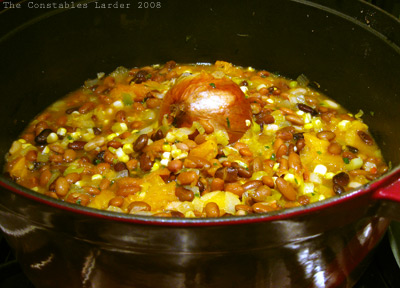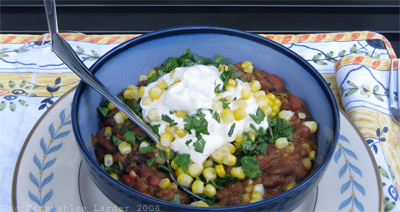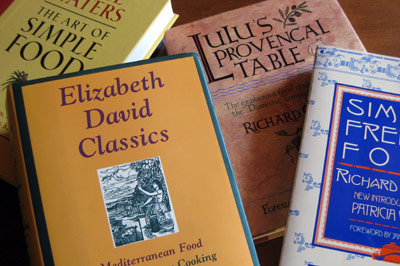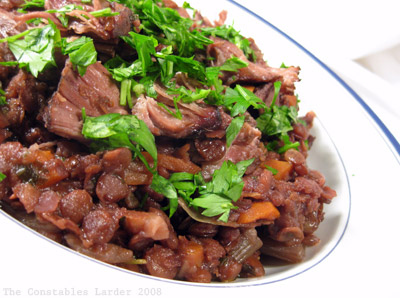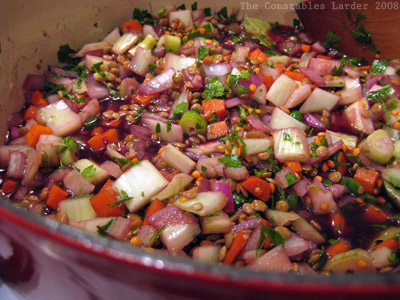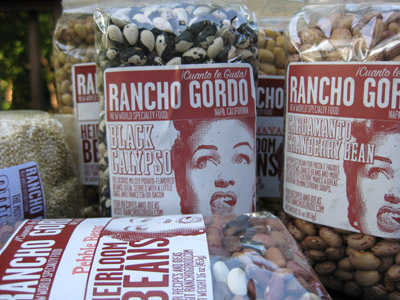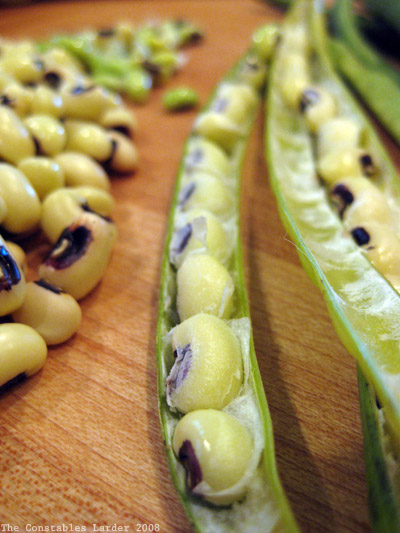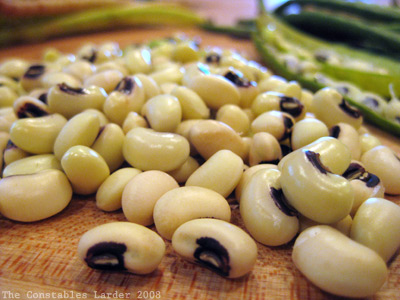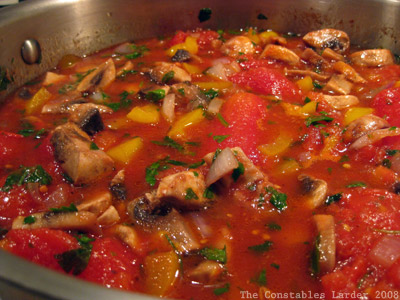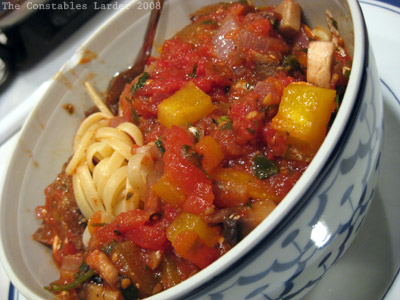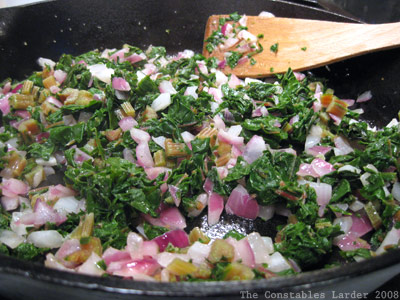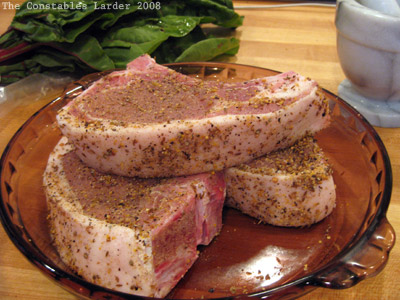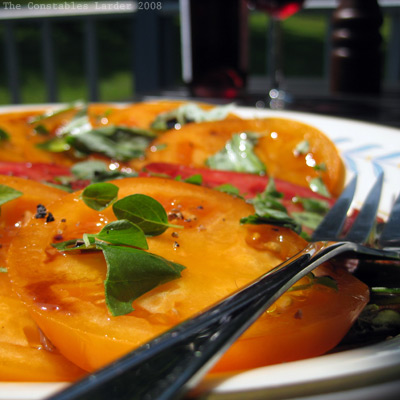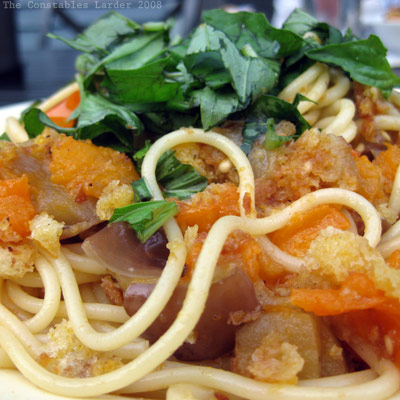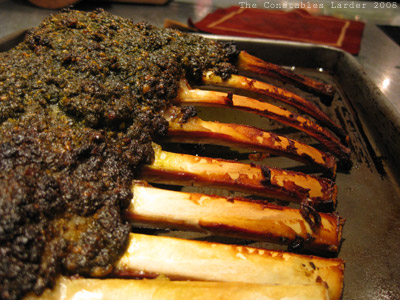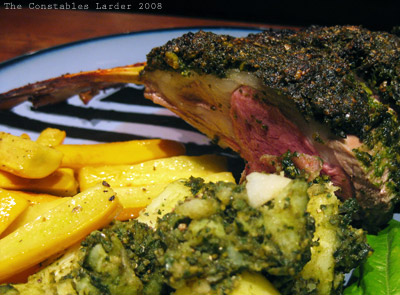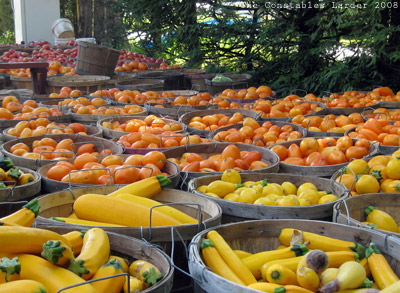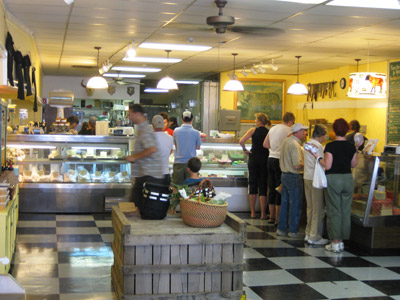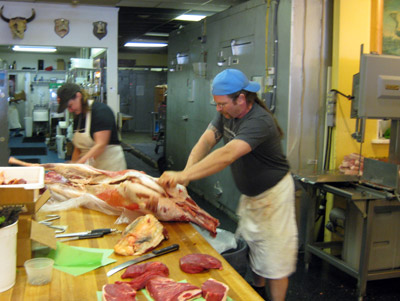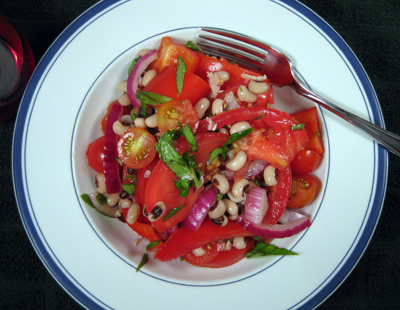Hello from Los Angeles. Let’s just say that my culinary experiences out here have been, ah, lacking, so I will skip the gripes and get right back to images and thoughts from last weekend.
Another small dish we served this weekend was a super-simple green bean salad with a shallot-vinegrette. I should title this “porcupine salad” in honor of our dog Ellie, who you saw last post, discovering said creature for the first and hopefully last time. I saw it at the end of our driveway a split second after Ellie did, but it was a split-second too late (insert slow motion “NNNNNnnnnooooooooo!!!”)
The ensuing debacle included a bizarre 3-way dance with Ellie (mouth and nose at this point already covered in spines) circling the porcupine while shaking her head in pain, me in pursuit of the dog yelling and trying not to get spiked myself, and the porcupine making slow but steady progress towards the woods while spinning around and around waving its pointy business end at both of us.
Believe it or not, this was actually repeated twice, as our dog (normally so well behaved) squirmed free of my grasp as Lisl tried to remove a few spines, and went *back* after the porcupine. Four hours and a big emergency vet bill later, Ellie was fine, if a bit woozy from the anesthetic.
It really was a glorious weekend if we just pretend The Porcupine Affair was a Ludlum book rather than our afternoon.
Green Bean, Tomato & Shallot Salad
Amounts serve 2
Two handfuls of fresh green beans
1 large handful of red and orange cherry tomatoes
1 small/medium shallot
extra virgin olive oil
white wine vinegar
dijon mustard
salt and pepper
Mince your shallot and place in a small bowl or mug with a dash of olive oil and two dashes of white wine vinegar. Let this marinate while you do the rest.
Wash and top and tail the green beans. Place in boiling water for 2 to 3 minutes then immediately drain and cool by running cold water over the beans in the colander. Cut them in half (or bite sized pieces) and place in a salad bowl.
Wash, dry and halve your cherry tomatoes, and add to salad bowl.
Finish your vinegrette by adding a small amount of dijon mustard (say, 1/8 of a tsp), a dash or two more of olive oil, a small amount of sea salt and ground pepper. Taste and add more olive oil, vinegar, salt and/or pepper as needed. Mix into the salad bowl and let it all sit together for at least 10 minutes before serving.
Now onto other pics from the weekend:
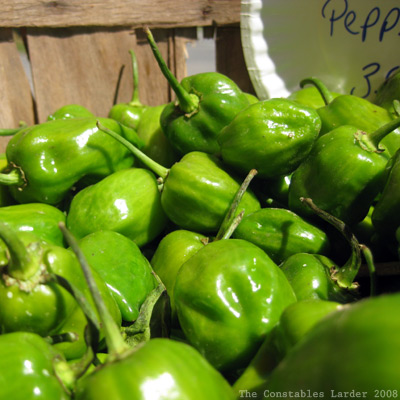
Habanero peppers at Gill’s farm stand

I spotted this lone pinecone hanging onto the spruce tree.

Huge amounts of natural peppermint grow by a little creek at the front of our property, and the bees work away.
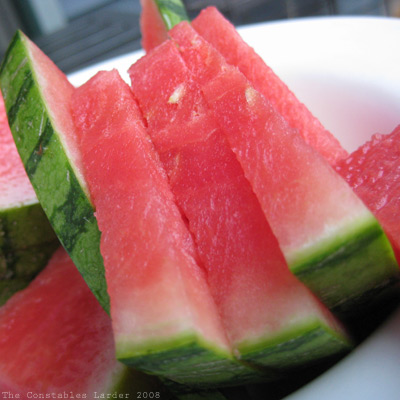
Not an unusual photo of watermelon, but I bet come February, I’ll be happy to see this pic again!
